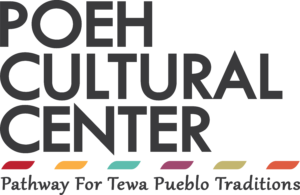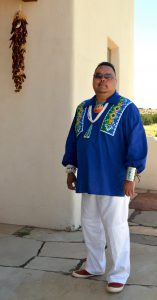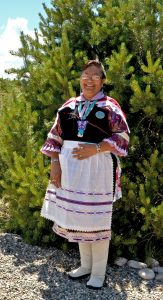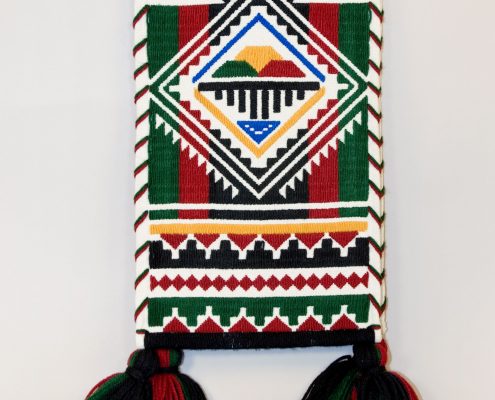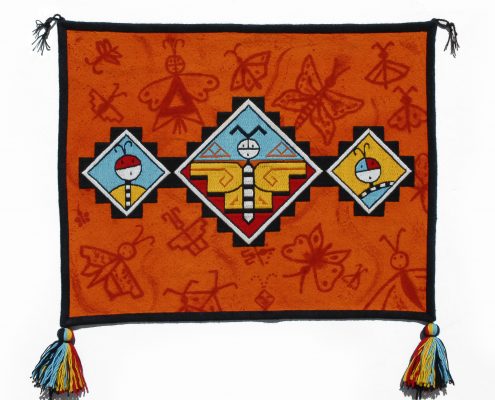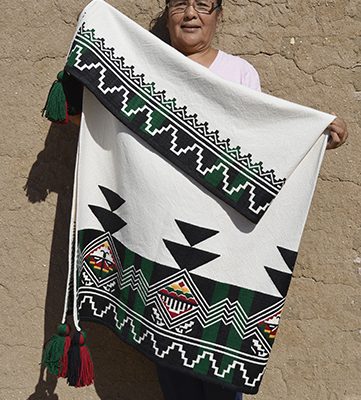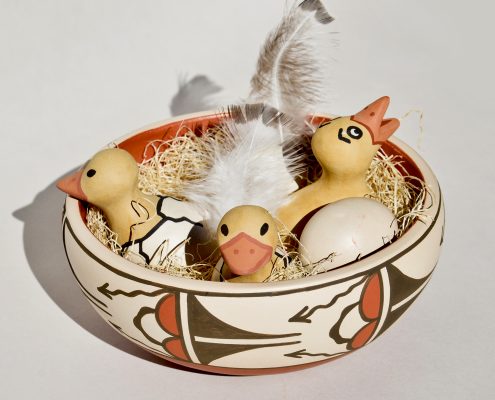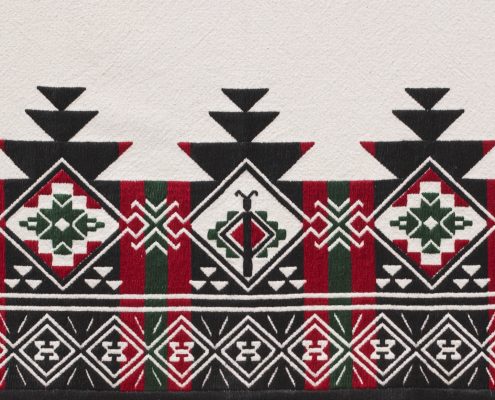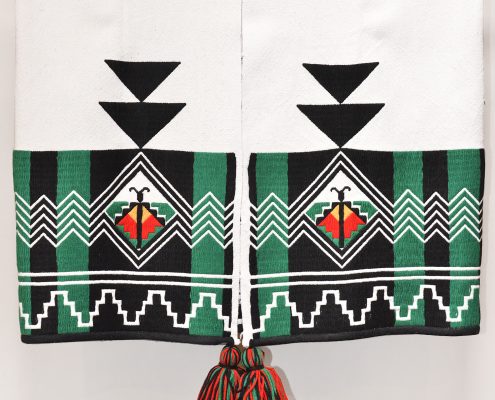PATHS OF BEAUTY
This exhibition celebrates the life work of Isabel C. Gonzales and Shawn Tafoya, two Pueblo individuals dedicated to teaching and passing on their creative gifts. Isabel and Shawn’s handmade garments and pottery are prayers – prayers about nature and all of its life-giving essences: Father Sun, the clouds, falling rain, Mother Earth, growing corn, and all the sacred elements and living creatures in the world. Their contributions are of special value to the Pueblo community, and when worn and used, these gifts bring happiness and beauty to our lives.
A Continuous Thread: The Story of Pueblo Weaving and Embroidery
For centuries, Pueblo people have made beautiful garments. Our earliest Pueblo ancestors used knotting, braiding, and finger-weaving techniques to make blankets, socks, bags and nets from wild hemp and yucca leaf fibers, animal fur, and feathers. By 1000 CE Pueblo farmers grew cotton, which they spun into thread with a wooden shaft-spindle, and wove into cloth on upright and back-strap looms. Pre-contact kiva paintings illustrate their elaborate embroidered and tie-dyed garments.
In 1598 the first Spanish settlers were impressed by the clothing worn by Pueblo peoples. Spanish authorities quickly imposed their own demands on Pueblo weavers. For 80 years, until the Pueblo Revolt of 1680, Pueblo craftsmen wove cloth as a form of forced labor payment. During this time at more than 35 Franciscan mission communities, Pueblo leaders and families accepted the outward form of the new Christian religion, but continued to practice their own religion away from Spanish eyes.
Today, men, women, and young-people in all of the Pueblos continue to make the traditional clothing needed for special occasions. Belts and white rain sashes are still woven using commercial string, wool and acrylic yarns. Hand-embroidery is done on commercial monkscloth with yarns that are often re-spun before stitching.
The making of traditional garments is an ongoing commitment to Pueblo community ideals that requires care and dedication. Textiles communicate relationships with the spiritual world. When made and danced, they bring health, beauty and goodness to our lives.
